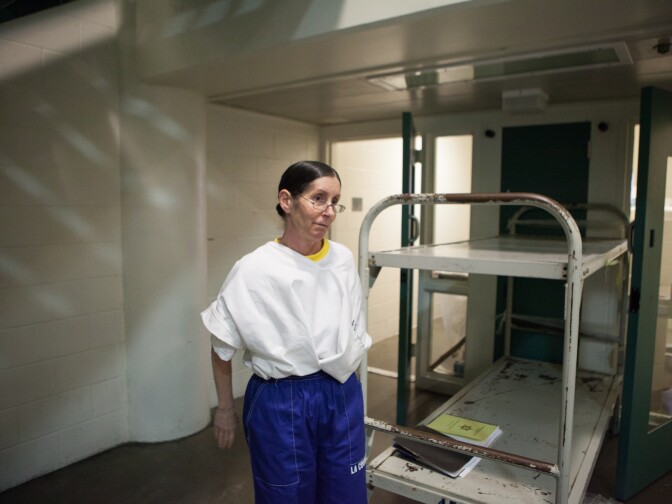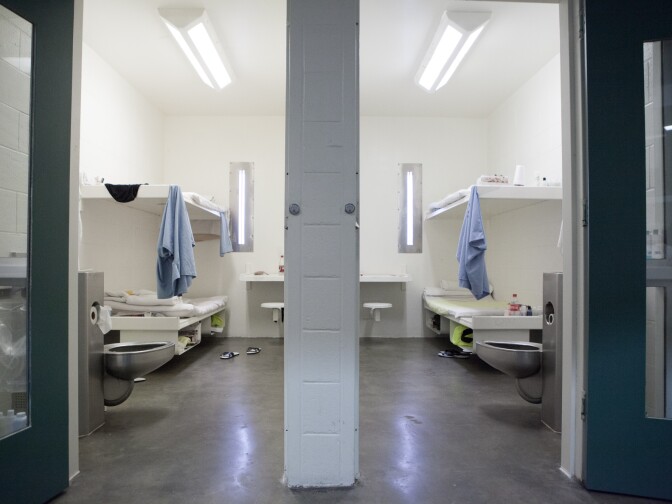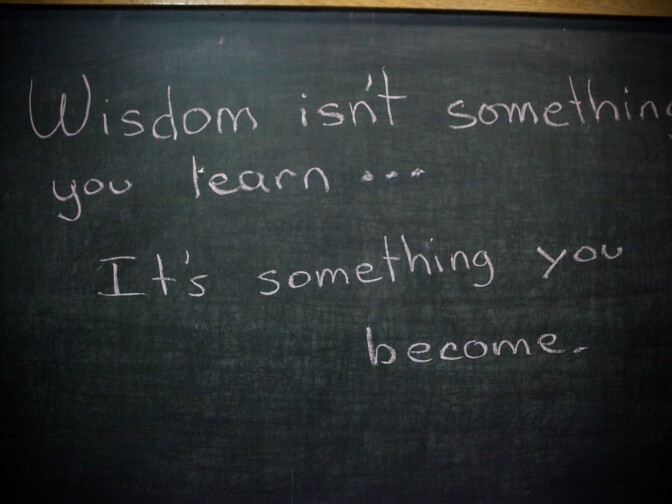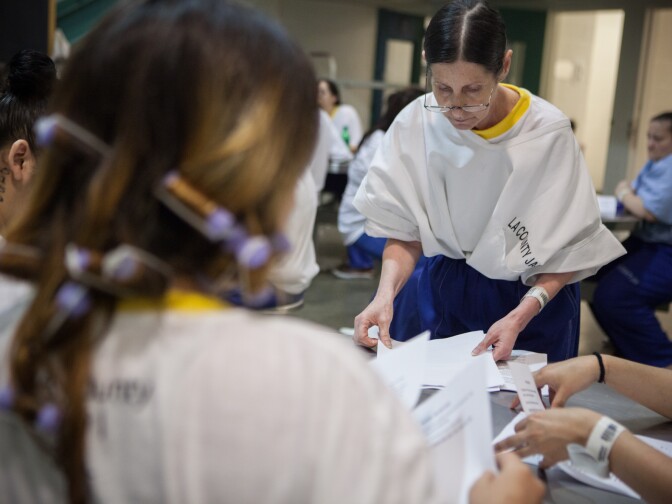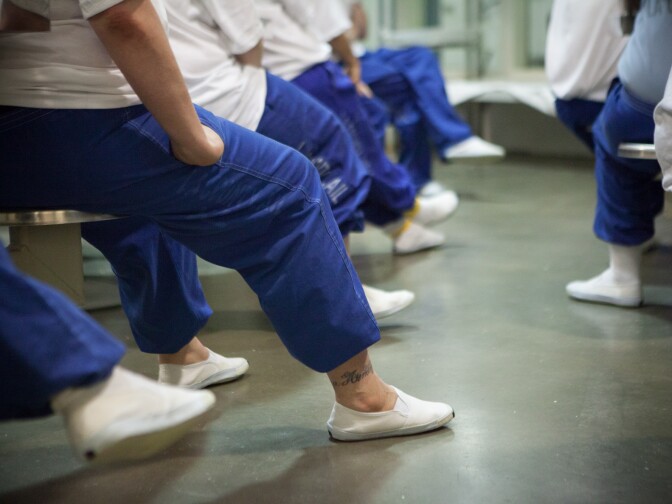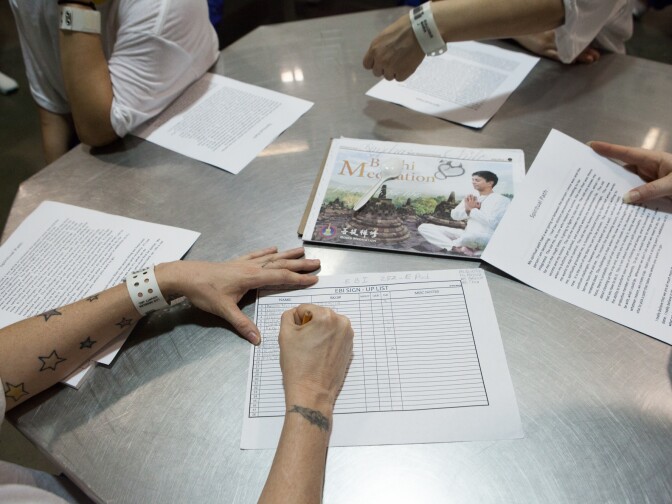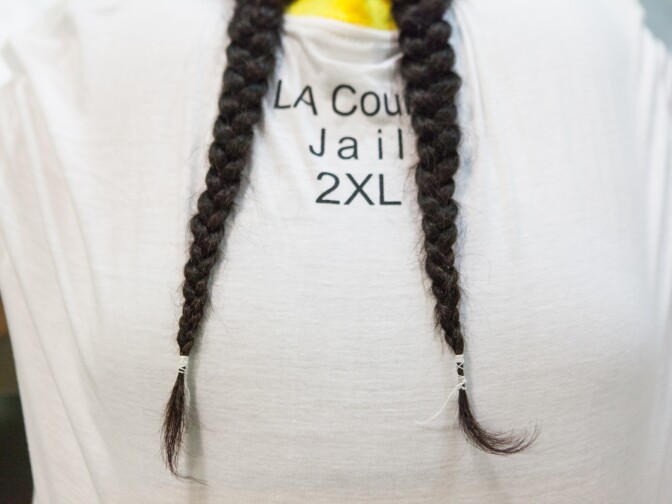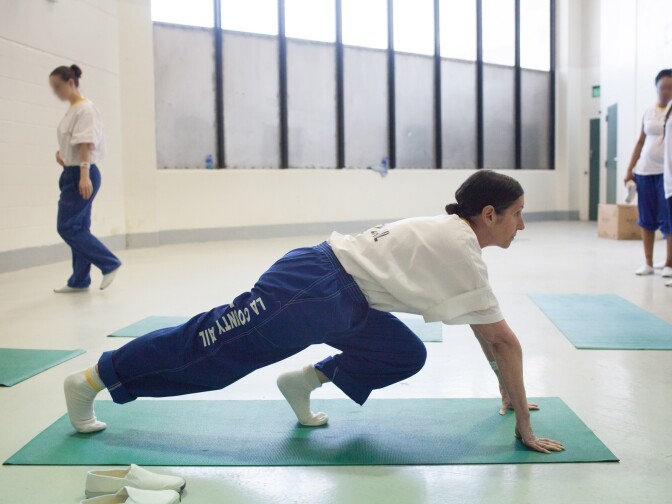With our free press under threat and federal funding for public media gone, your support matters more than ever. Help keep the LAist newsroom strong, become a monthly member or increase your support today.
Calif. prison realignment: Some women are serving more time in custody (photos)
Caryn Quincey holds up a photo she keeps in her jail cell at “Twin Towers” lockup in Downtown Los Angeles.
"Different, right?" she said.
The photo was taken a few days before she went to jail on a conviction related to financial fraud. That was two years ago, but in the photo, Quincey looks about 10 years younger. But, she says, things could be worse.
"I just want to give a shout-out to the woman who did my Botox before coming in here," Quincey said. "It's held up well."
She is one of thousands of women convicted of lower-level felonies who've been sent to L.A.'s County jails under AB 109, the state's prison realignment law passed in 2011. Meant to alleviate overcrowding in California's state prisons, realignment put counties in charge of punishing people for lower level drug and property crimes.
Counties have treated this task differently. Some, like Riverside, Orange, San Francisco, and Contra Costa, have utilized jail alternatives like residential drug treatment programs or split sentencing, which allows an offender to serve a portion of their time on probation instead of in jail. Los Angeles, however, has almost entirely relied on jail terms in which offenders are not allowed to earn credits to get out early. For Quincey and other AB109 women, this has meant serving lengthy sentences in a place designed to house people for weeks or months, not years.
"I haven’t seen sunshine in 25 months," Quincey said. "You know, I haven’t seen a brush. I think some of that still needs to be worked out.”
Prisons have outdoor yards and offer inmates more items they may need long term, like the option to buy sneakers. L.A. jail inmates are issued sandals, which are difficult to wear for doing any sort of exercise. Prisons also generally allow for contact visits, where family members can sit in a room with an inmate for hours. In jail, visits are limited to two people, talking through phones, seeing each other through a glass wall.
Melinda Rodriguez says that's made it difficult for her two teenage daughters to visit. Instead, she writes them cards every week.
“I do get to talk to them once a month," Rodriguez said. "It’s hard though, because they’re like, 'mom, how much time do we get to talk this time.'”
Rodriguez is in jail on fraud, a crime stemming from an off-and-on drug habit she's struggled with since she was 13 years old. Both women say as hard as jail has been, they've benefited greatly from the L.A. County Sheriff's Department educational programs, which provide activity and camaraderie.
"It’s surprising that you meet a lot of people like yourself, it’s like looking in a mirror," Rodriguez said. "You see a lot of women like: 'Oh wow. You’re just like me and I’m just like you.'”
Women with children, women addicted to drugs, and women convicted of property crimes.
Such women used to flood California’s state prison system, until the U.S. Supreme Court determined California’s prisons were massively overcrowded and the state realigned such women to the counties. The move cut the number of women in California prisons nearly in half because there had been so many lower level female prisoners.
But Susan Burton, of A New Way of Life Reentry Project in Watts, says those numbers don't mean realignment has been successful.
“Overcrowded. Bad medical conditions. People stripped of their dignity," Burton said. "It’s pretty much the same.”
She wants to see alternatives to incarceration for women who commit lesser crimes. Burton and a lot of prisoner advocates thought realignment would bring a shift towards more rehabilitation and less incarceration.
“But there’s no shift,” Burton said. “They’re still just packing people into jails."
Los Angeles County is looking to build a new women's jail in Mira Loma–a move that Burton and others see as a disincentive to look into incarceration alternatives. The county sees it as an opportunity to build a more suitable facility for women.
Burton says the Rhetoric from lawmakers' that things would be different under realignment–especially for women–hasn't come through.
"In no way did I think it would look like this," Burton said. "It hurts to see again how people are again being treated when there’s opportunity for something better.”
Terri McDonald, the assistant sheriff in charge of L.A. County’s jails, says she’s hoping for more as well.
“I sure am hopeful that we’re able to find funding for alternative programs for both males and females," McDonald said.
She says L.A. hasn’t innovated as much as other counties in California because it’s been so overwhelmed.
"I think it’s unfair to try to compare something as large as L.A. County to other counties," McDonald said. "Some other counties aren’t getting thousands of people released to probation in a month. Or thousands of inmates sentenced to jail in a month.”
Two years into realignment, things are stabilizing a bit, McDonald said. The sheriff’s department is looking at developing alternatives to jail for women and men. She’s hoping to put forward a proposal for alternatives to the Los Angeles County Board of Supervisors early next year as part of a comprehensive long-term plan for L.A.'s jail system.
There’s also a lack of data on realignment's impact. Academics and policy makers are now beginning to track and evaluate the program's effects in a comprehensive way.



